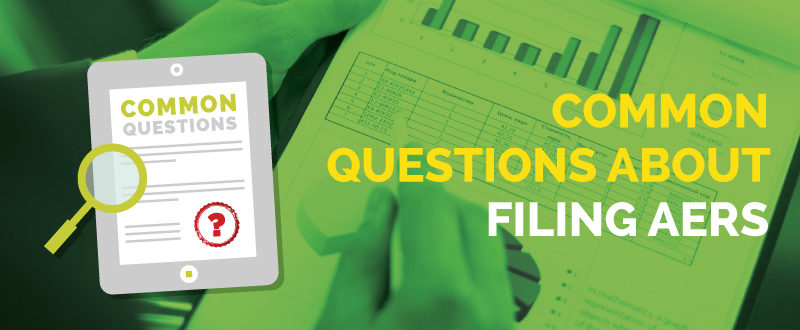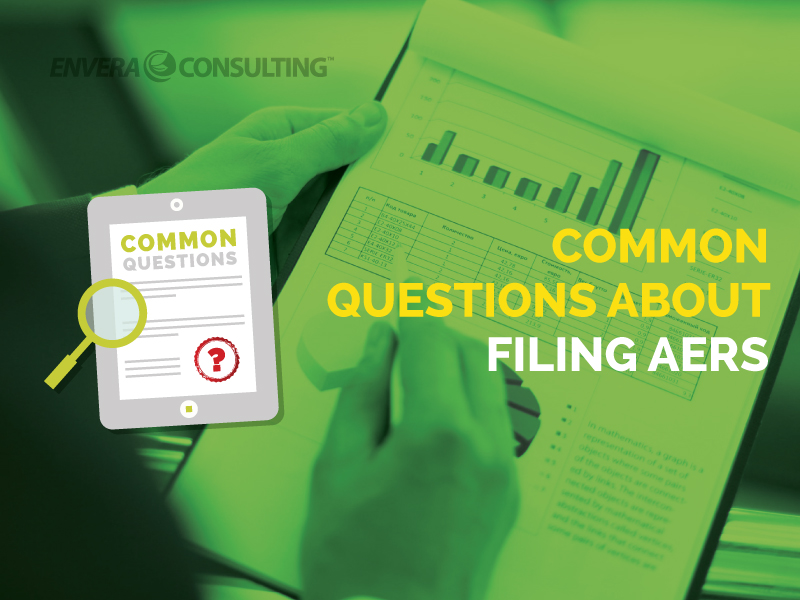

Generally speaking, the South Coast Air Quality Management District (SCAQMD) requires you to submit an annual emissions report (AER) if you meet one or more of the following three criteria:
- Your facility is notified by the AQMD to submit an AER.
- Your facility’s emissions of criteria pollutants and/or toxic air pollutants exceed the reporting thresholds found in Rule 301.
- Your facility is part of the Assembly Bill 2588 (AB 2588) reporting program for air toxics.
If your facility does not meet one of the above criteria, you might be lucky enough to be exempt from the AER program. However, you still need to request an exemption from the AQMD, and the AQMD needs to grant your request. Even if you discover you’re exempt after being notified to file, you must still file for that year and submit an exemption for the following year.
Exemption requests, which are due on the same date as the AER itself, are typically good for a three-year period, after which you will need to re-apply for the exemption. If your exemption request is granted, make sure to continue tracking your emissions in order to demonstrate your continued exemption eligibility.
Here are some other common questions about AERs that we hear at Envera:
1. I submitted an AER last year, but I think I am exempt this year. What should I do?
If this is the case, first verify that:
- You did not receive an AER notification letter from the SCAQMD.
- Your emissions are below the reporting thresholds.
- Your facility is not part of the AB 2588 program.
If your facility does not fit into any of those criteria, then you are most likely exempt.
The next step would be to simply file the AER for the current year and formally request the exemption for next year. Filing an AER one year, followed by not filing in the next, could get your facility flagged by the SCAQMD’s system — not a fun experience, trust me.
2. Can I use a source-test report for emissions estimations on my AER?
Source tests are an excellent way to accurately estimate emissions from a facility’s equipment because they measure actual emissions as opposed to using an emission factor, which tends to overestimate emissions from a given source.
So the short answer is yes, you can use a source-test report to estimate emissions on your AER. However, the SCAQMD must pre-approve use of the source test.
In general, if a source test is approved by the SCAQMD, that means that the test producing the source-test report went through the entire pre- and post-approval sequence, which includes the following:
- Drafting of a source-test protocol
- Submitting the protocol to the air district for approval
- Notifying the SCAQMD Engineering & Permitting Department in advance of the source test
- Conducting the actual source test
- Submitting the test report to the SCAQMD
- Receiving an approval letter from the SCAQMD approving the source test
If you decide to use an approved source test on your AER, I highly recommend uploading the approval letter and the source-test report (or the summary page of results) via the SCAQMD’s AER reporting tool so that all of your backup information is nice and tidy.
3. Where do I find emission factors to estimate air emissions?
As mentioned previously, for an AER, most people will simply go with an emission factor when estimating emissions from their equipment.
So that begs a follow-up question: Where do I find emission factors to estimate air emissions?
There are many ways to track down an emission factor, but we recommend first going to the EPA’s AP-42 database, which is filled with emission factors from various industries. For example, if you’re calculating emissions for a petroleum-refining facility, AP-42 lists equipment such as cooling towers, oil/water separators, and fluid catalytic cracking units, as well as the emission factor for each.
As I mentioned earlier, it’s important to exercise care when using emission factors, as emissions from a source can vary significantly, often resulting in overestimation. But, for a variety of reasons (too long to go into here), they shouldn’t be ruled out as an option for helping complete the AER.
Other sources for emission factors include air agency websites. The SCAQMD’s site includes several valuable resources for emission factors, including:
- The guidance document for the AB 2588 “Hot Spots” program for air toxics
- The SCAQMD’s AER guidebook for criteria pollutants
- The SCAQMD’s certified engine program
- The SCAQMD’s AER homepage
Other places to find emission factors include trade associations, equipment manufacturers, and safety data sheets (SDS). For more info, read our post Where Do I Find Emission Factors to Estimate Air Emissions?
If you’re having trouble locating an emission factor or determining whether you qualify for an exemption, let us know. We’re here to help!